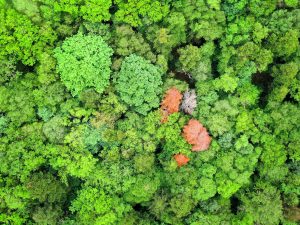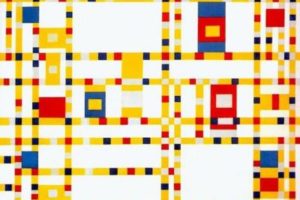What is your point of view in arts education advocacy?
Are you the arts educator, working everyday to advance students’ knowledge and experience in the arts? Or the advocate working on policy levers that will improve quality, equity and access for all students? Can you see the forest for the trees?
Whatever your role, we all come with a unique perspective that shapes our actions. In earlier posts on sustainability, I described the arts education ecosystem, with the student in the center, and rightly so, as the ultimate beneficiary of our work.
That said, when we are asked to advocate for arts education, we as individuals become the center. The action starts with us—who we are, what we know, and are able to do. No matter where you are standing, your perspective is valid.
Where Do You Stand? (You may find yourself with a foot in more than one group!)
There are three perspectives that are most often represented in arts education advocacy. (You may debate this characterization, but please indulge me for the moment.)
 Practitioner Advocate: Teachers, community arts partners, teaching artists, parents, and administrators would fall within this group. They are doing the everyday work of providing the arts to students, directly in the classroom and indirectly through parenting, partnerships, infrastructure and budgetary support.
Practitioner Advocate: Teachers, community arts partners, teaching artists, parents, and administrators would fall within this group. They are doing the everyday work of providing the arts to students, directly in the classroom and indirectly through parenting, partnerships, infrastructure and budgetary support.
 Field-builder Advocate: Researchers, funders, corporate citizens, higher ed, arts service organizations, and professional educator associations are in this group. It is in their interest to support the practitioners and the policy advocates, to build understanding and knowledge, and to build capacity in the field.
Field-builder Advocate: Researchers, funders, corporate citizens, higher ed, arts service organizations, and professional educator associations are in this group. It is in their interest to support the practitioners and the policy advocates, to build understanding and knowledge, and to build capacity in the field.
 Policy advocate: These are the folks who advance positive budgetary and policy agendas in support of arts education at the local, state and national level. Their work is informed by the practitioners and the field-builders. They educate policymakers and advocates, amplify messages, mobilize constituencies for action, and seek to influence (lobby) the policymakers.
Policy advocate: These are the folks who advance positive budgetary and policy agendas in support of arts education at the local, state and national level. Their work is informed by the practitioners and the field-builders. They educate policymakers and advocates, amplify messages, mobilize constituencies for action, and seek to influence (lobby) the policymakers.
Effective advocacy is accomplished by first understanding where you are, then embracing perspectives beyond your own. Forest and trees.
Go to the Balcony
In Leadership on the Line, Ronald Heifetz and Marty Linsky use a balcony metaphor to describe this multi-focused perspective.
“Let’s say you are dancing in a big ballroom with a balcony up above…. Most of your attention focuses on your dance partner…. You let yourself be carried away by the music, your partner, and the moment.
“But if you had gone up to the balcony and looked down on the dance floor, you might have seen a very different picture. You would have noticed all sorts of patterns….
“Achieving a balcony perspective means taking yourself out of the dance, in your mind, even if only for a moment. The only way you can gain both a clearer view of reality and some perspective on the bigger picture is by distancing yourself from the fray.” (Heifetz and Linsky, 2002, p. 53.)
And I would posit the opposite is true, as well. The only way for a balcony observer to understand what’s happening on the dance floor is to join the dance, even if only briefly.
Own Your Expertise
Claim your knowledge and experience. If we (the education sector) are to craft effective policies, then we need to hear from the practitioner advocates about what works (or doesn’t work) in the classroom. If we want to earn the trust of a policymaker, then our policy advocates must guide us to create compelling stories with data as well as heart.
Embrace Learning
Take advantage of learning opportunities in your community and at state and national conferences. The sessions are both useful in presenting a big picture perspective and practical, providing concrete action steps. Colleagues at the NAMM Foundation, National Association for Music Education, Americans for the Arts, Arts Education Partnership, and others are providing rich opportunities to advance knowledge and professional learning for our field.
Commit to Action
Take a moment to experience the treetop canopy if you typically dwell on the forest floor. Observe patterns, relationships, and pathways that one can see only from a distance. Similarly, if you work from a removed perspective, get down to the ground to understand the day-to-day challenges and workings of music and arts education from the educator/student perspective. We all have an important role to play in the education of our youth. We can better advance our cause through multiple perspectives. Forest AND trees.






